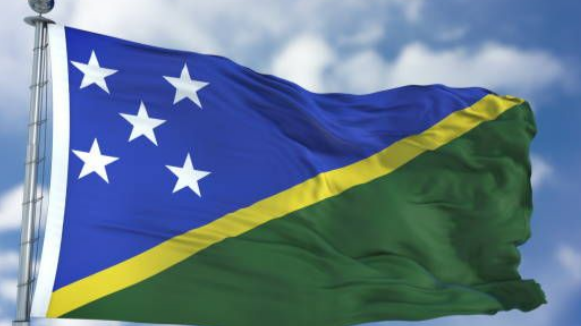CHOGM – customarily held every two years – is the Commonwealth’s primary political meeting and is presently in session in Suva, the capital of Tonga.
it is said that building on progress since CHOGM 2022, leaders will deliberate on global economic, environmental and security challenges, and discuss how the contemporary Commonwealth can work together to build resilience, boost trade, innovation, growth, and empower the Commonwealth’s 1.5 billion young people to build a more peaceful, sustainable future..
In terms of a more sustainable future, I wonder what will emerge from the Tonga meeting to see the great environmental risks posed by sea rise and water intrusion into the Solomon Islands adequately addressed and solutions offered?
Anouk Ride is an adjunct senior fellow at the Solomon Islands National University and a fellow at Australian National University knows the Solomon Islands like few others and I have been reading an article she wrote referring to sea rise and environmental risks facing the Solomon Islands and I will quote from her article.
"Solomon Islands currently ranks as the second-most at-risk nation for natural disasters, in part because a high proportion (65 percent) of the population lives less than one kilometer from the sea. Rising sea levels also come with heightened risks of land loss and increased salinity of the water supply. Meanwhile, climate change is affecting marine habitats such as mangroves, river estuaries and coral reefs — a major concern, as 47 percent of all Solomon Island households rely on fishing or harvesting invertebrates for both food and income.
"Meanwhile, migration is becoming a more prominent issue in Solomon Islands, as informal settlement limits options for communities to adapt and respond to climate change. For example, the Micronesian communities that were resettled in the 1960s were often not given formal ownership over their land. So when Kiribati communities around the town of Gizo were affected by a tsunami, they were told by aid agencies that their community buildings could not be built back with aid funds because they did not legally own the land, leaving them without proper infrastructure.
"On many of the larger islands, such as Guadalcanal and Malaita, historical migrations featured people “coming down” from higher elevations to the seaside to access services at Christian missions and colonial stations. With climate change threatening sea-level territory, some of these people may have options to go “back up” to more inland or higher elevation areas inhabited by the same kin or cultural groups. While this amounts to displacement, it’s still a viable option to relocate at-risk communities to safety. However, there is no clear direction on where people who do not have links to inland areas should settle as sea levels continue to rise.
"Right now, climate migration is primarily handled at the family or small clan level. People whose islands have become, or are on the cusp of becoming, unlivable currently find new housing among family- or tribal-owned lands, have it provided or partially subsidized by their employers, or squat on undeveloped lands in marginalized — and often also disaster-prone — urban and semi-urban areas.
"A potential conflict factor is uncontrolled urban drift and informal settlement around Honiara and other towns. Urban areas are managed by the government but are generally overcrowded, with poor provision of services. Further migration to these areas can lead to resentment and even forced evictions.
"These sort of tensions were a major feature of the low-level civil war in Solomon Islands from 1998-2003, where an estimated 20,000 people were evicted from Guadalcanal by Guale militants with grievances about migration from Malaita.
"There have been a number of efforts by leaders in Guadalcanal and Malaita to reconcile and address those events. However, the national government’s response to calls to decentralize powers and put more control over land development in the hands of provincial leaders has been slow
"At the international and Pacific regional level, there have been increased commitments to finance and aid the fight against climate change, while many in Solomon Islands’ civil society have called for climate justice. So far, the impact of these funding commitments is difficult to gauge. Solomon Islands is the second-most impoverished nation in the Pacific. The median household income is just $3 per day. This, plus gaps in governance and service provision, makes it harder to respond to and be proactive about disasters and climate change."
End of quote.
My great concern is the CHOGM meeting in Suva could well end up with no clear resolution to the climate change crisis now widely affecting the Solomon Islands and no financial solutions offered to effectively combat sea rise.
What do readers think?
Sincerely
Frank Short,
www.solomonislandsinfocus.com



